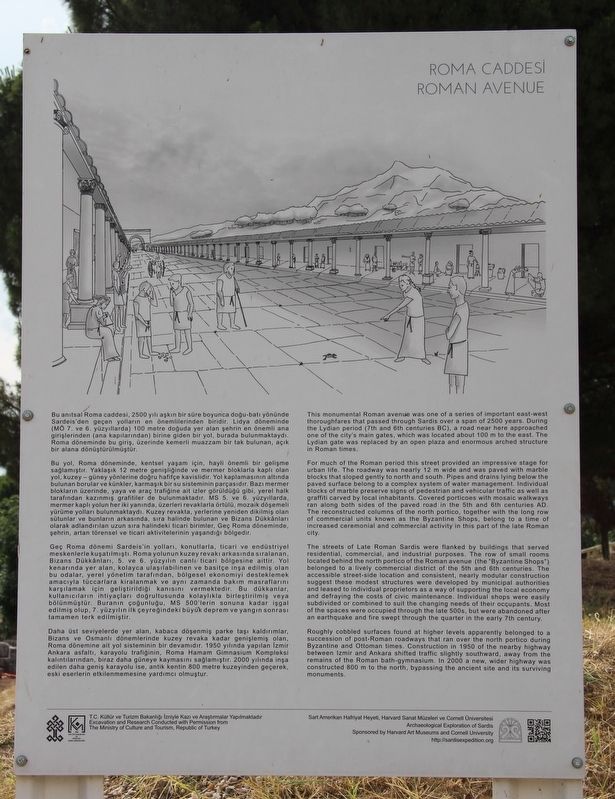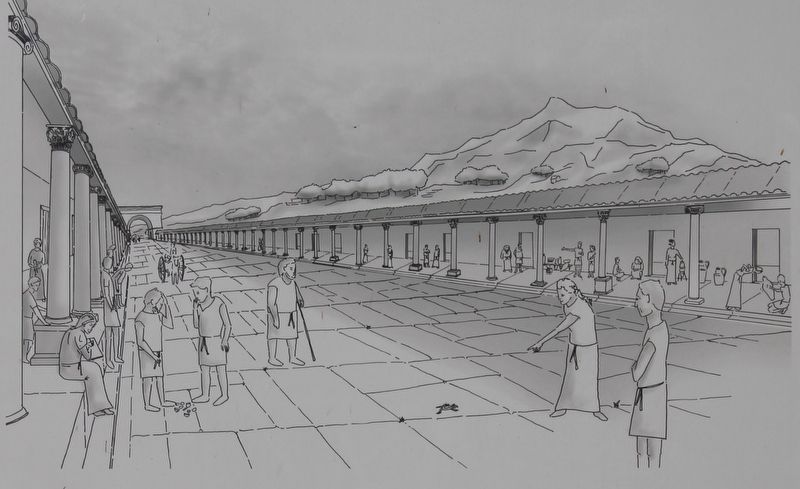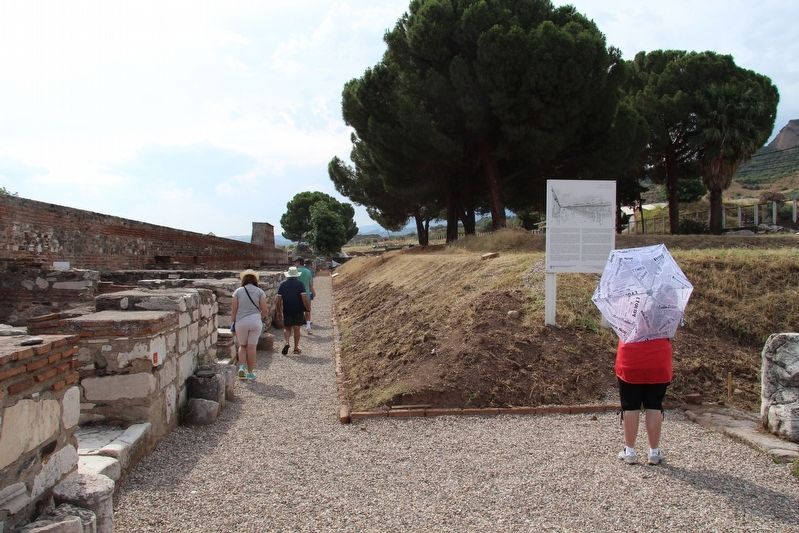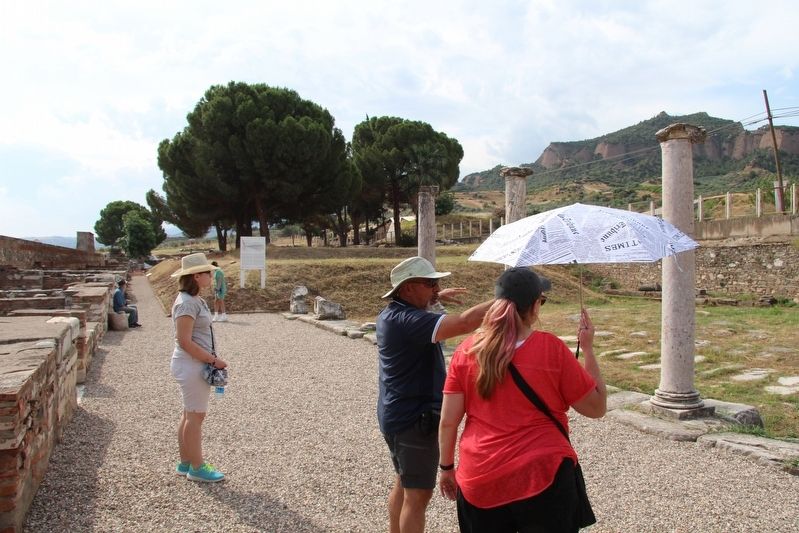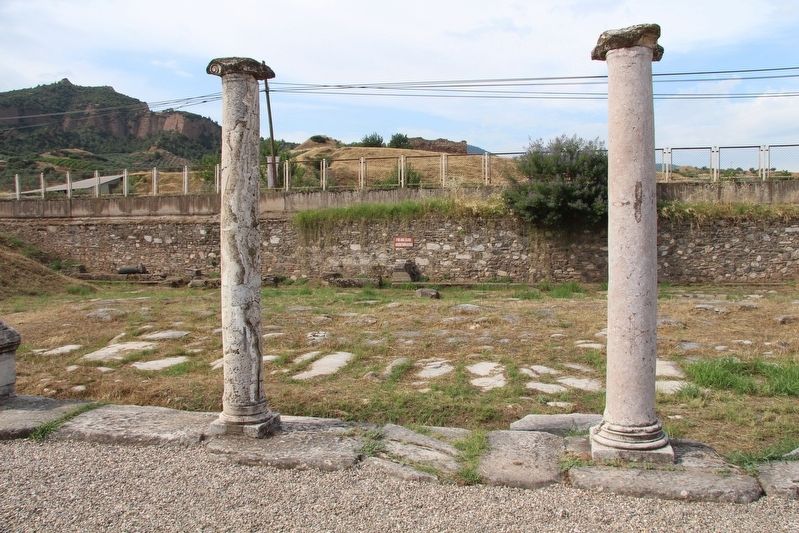Near Sart in Salihli, Manisa, Turkey — West Asia or Southeast Europe
Roman Avenue
English Text:
This monumental Roman avenue was one of a series of important east-wes thoroughfares that passed through Sardis over a span of 2500 years. During the Lydian period (7th and 6th centuries BC), a road near here approached one of the city''s main gates, which was located about 100 m to the east. The Lydian gate was replaced by an open plaza and enormous arched structure in Roman times.
For much of the Roman period this street provided an impressive stage for urban life. The roadway was nearly 12 meters wide and was paved with marble blocks that slopped gently to north and south. Pipes and drains lying below the paved surface belong to a complex system of water management. Individual blocks of marble preserve signs of pedestrian and vehicle traffic as well as graffiti carved by local inhabitants. Covered porticoes with mosaic walkways ran along both sides of the paved road in the 5th and 6th centuries AD. The reconstructed columns of the north portico, together with the long row of commercial units known as the Byzantine Shops, belong to a time of increased ceremonial and commercial activity in this part of the late Roman city.
The streets of Late Roman Sardis were flanked by buildings that served residential, commercial, and industrial purposes. The row of small rooms located behind the north portico of the Roman avenue (the "Byzantine Shops") belonged to a lively commercial district of the 5th and 6th centuries. The accessible street-side location and consistent, nearly modular construction suggest these modest structures were developed by municipal authorities and leased to individual proprietors as a way of supporting the local economy and defraying the costs of civic maintenance. Individual shops were easily subdivided or combined to suit the changing needs of their occupants. Most of the spaces were occupied through the late 500s, but were abandoned after an earthquake and fire swept through the quarter in the early 7th century.
Roughly cobbled surfaces found at higher levels apparently belonged to a succession of post-Roman highways that ran over the north portico during Byzantine and Ottoman times. Construction in 1950 of the nearby highway between Izmir and Ankara shifted traffic slightly southward, away from the remains of the Roman bath-gymnasium. In 2000 a new, wider highway was constructed 800 meters to the north, bypassing the ancient site and its surviving monuments.
Erected by The Ministry of Culture and Tourism, Republic of Turkey, and the Harvard Art Museums and Cornell University.
Topics. This historical marker is listed in these topic lists: Parks & Recreational Areas
• Roads & Vehicles • Settlements & Settlers.
Location. 38° 29.289′ N, 28° 2.383′ E. Marker is near Sart, Manisa, in Salihli. Marker can be reached from Kenan Evren Cd. just east of Sart Yolu, on the left when traveling east. This marker is on the grounds of the Sardis Archaeological Park, near the Roman Bath-Gymnasium and Synagogue, amongst the ruins that line the Roman Avenue. Touch for map. Marker is in this post office area: Sart, Manisa 45370, Turkey. Touch for directions.
Other nearby markers. At least 8 other markers are within walking distance of this marker. Mesken / Residence (a few steps from this marker); Lokantalar / Restaurants (a few steps from this marker); (Yakub'un) Boya Dükkáni / (Jacob's) Paint Shop (a few steps from this marker); Synagogue - Main Hall (within shouting distance of this marker); Boya Dükkán / Paint Shop (within shouting distance of this marker); Bath-Gymnasium Complex (within shouting distance of this marker); Synagogue Forecourt (about 90 meters away, measured in a direct line); Tuvaletler / Latrines (about 90 meters away). Touch for a list and map of all markers in Sart.
Credits. This page was last revised on June 26, 2018. It was originally submitted on June 26, 2018, by Dale K. Benington of Toledo, Ohio. This page has been viewed 148 times since then and 7 times this year. Photos: 1, 2, 3, 4, 5. submitted on June 26, 2018, by Dale K. Benington of Toledo, Ohio.
